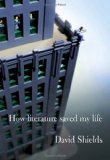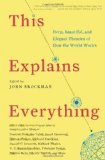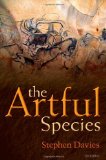The images and stories captured in The Human Face of Big Data are the result of an extraordinary artistic, technical, and logistical juggling act aimed at capturing the human face of the Big Data Revolution.
Big Data is defined as the real time collection, analyses, and visualization of vast amounts of the information. In the hands of Data Scientists this raw information is fueling a revolution which many people believe may have as big an impact on humanity going forward as the Internet has over the past two decades. Its enable us to sense, measure, and understand aspects of our existence in ways never before possible.
The Human Face of Big Data captures, in glorious photographs and moving essays, an extraordinary revolution sweeping, almost invisibly, through business, academia, government, healthcare, and everyday life. It’s already enabling us to provide a healthier life for our children. To provide our seniors with independence while keeping them safe. To help us conserve precious resources like water and energy. To alert us to tiny changes in our health, weeks or years before we develop a life-threatening illness. To peer into our own individual genetic makeup. To create new forms of life. And soon, as many predict, to re-engineer our own species. And we’ve barely scratched the surface . . .
Over the past decade, Rick Smolan and Jennifer Erwitt, co-founders of Against All Odds Productions, have produced a series of ambitious global projects in collaboration with hundreds of the world’s leading photographers, writers, and graphic designers. Their Day in the Life projects were credited for creating a mass market for large-format illustrated books (rare was the coffee table book without one).
Today their projects aim at sparking global conversations about emerging topics ranging from the Internet (24 Hours in Cyberspace), to Microprocessors (One Digital Day), to how the human race is learning to heal itself, (The Power to Heal) to the global water crisis (Blue Planet Run).
This year Smolan and Erwitt dispatched photographers and writers in every corner of the globe to explore the world of “Big Data” and to determine if it truly does, as many in the field claim, represent a brand new toolset for humanity, helping address the biggest challenges facing our species.
The book features 10 essays by noted writers:
Introduction: OCEANS OF DATA by Dan Gardner
Chapter 1: REFLECTIONS IN A DIGITAL MIRROR by Juan Enriquez, CEO, Biotechnomomy
Chapter 2: OUR DATA OURSELVES by Kate Green, the Economist
Chapter 3: QUANTIFYING MYSELF by AJ Jacobs, Esquire
Chapter 4: DARK DATA by Marc Goodman, Future Crime Institute
Chapter 5: THE SENTIENT SENSOR MESH by Susan Karlin, Fast Company
Chapter 6: TAKING THE PULSE OF THE PLANET by Esther Dyson, EDventure
Chapter 7: CITIZEN SCIENCE by Gareth Cook, the Boston Globe
Chapter 8: A DEMOGRAPH OF ONE by Michael Malone, Forbes magazine
Chapter 9: THE ART OF DATA by Aaron Koblin, Google Artist in Residence
Chapter 10: DATA DRIVEN by Jonathan Harris, Cowbird
The book will also feature stunning info graphics from NIGEL HOLMES.
1) GOOGLING GOOGLE: all the ways Google uses Data to help humanity
2) DATA IS THE NEW OIL
3) THE WORLD ACCORDING TO TWITTER
4) AUCTIONING EYEBALLS: The world of Internet advertising
5) FACEBOOK: A Billion Friends







